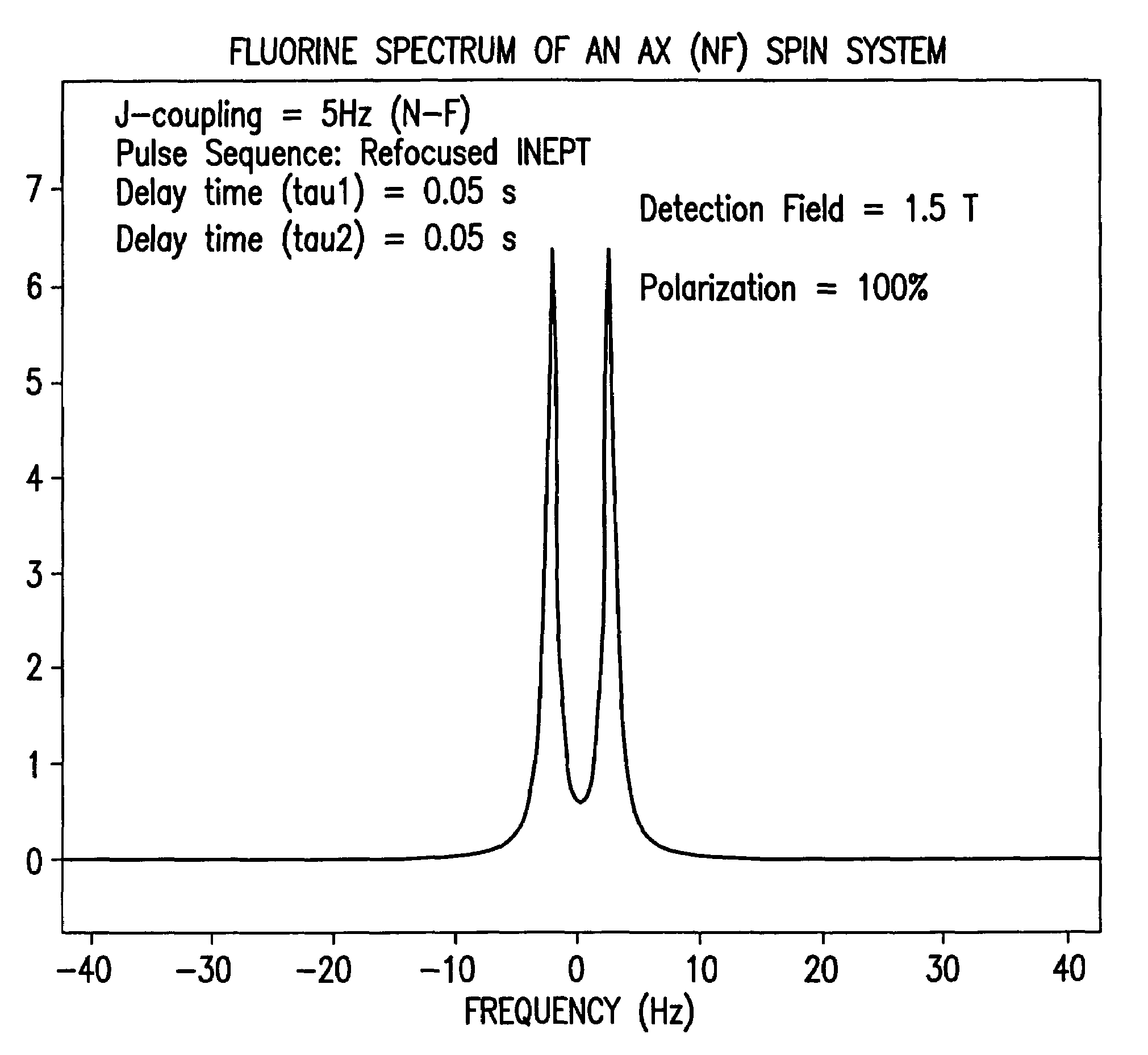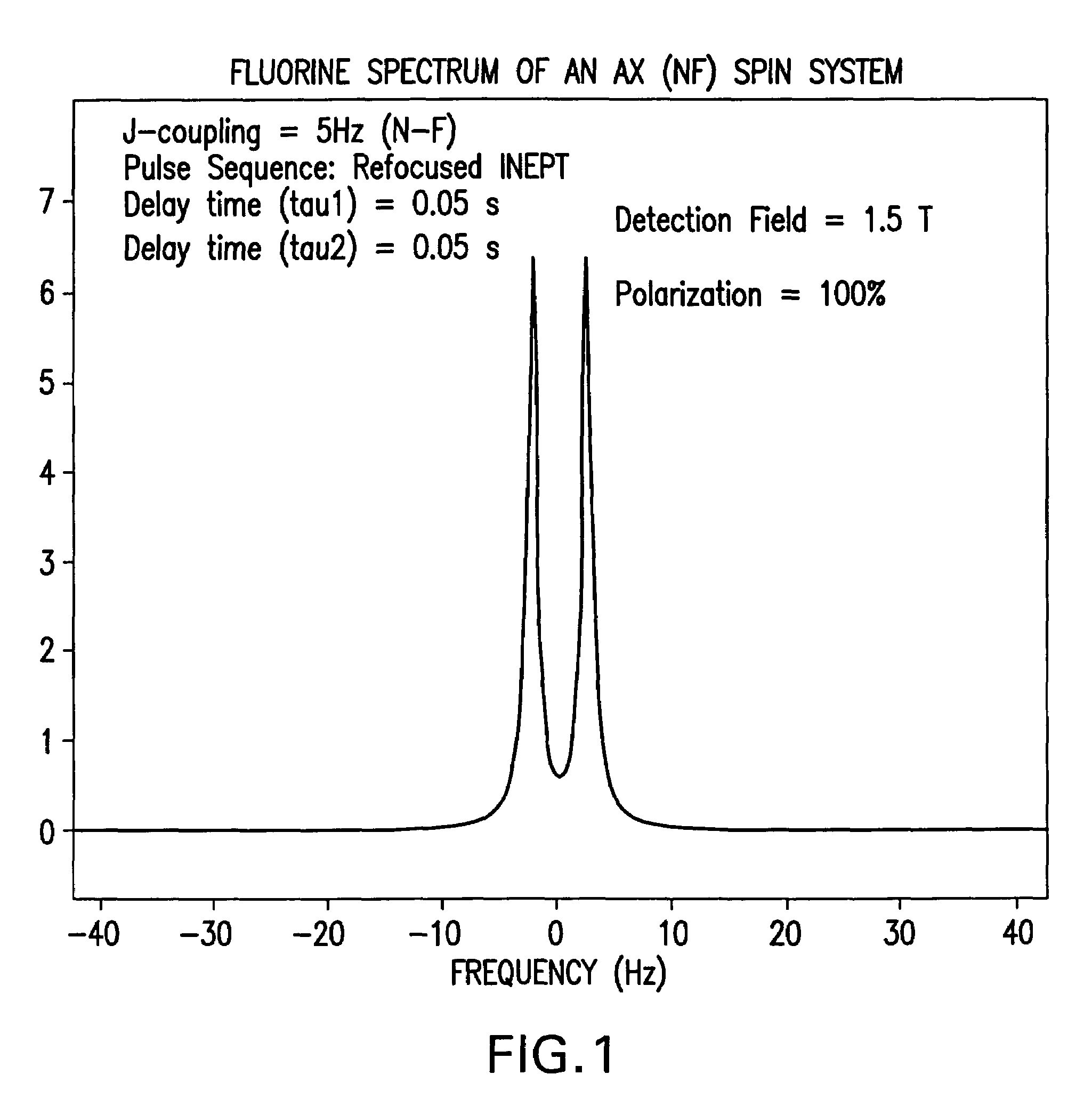Method of magnetic resonance investigation of a sample using a nuclear spin polarised MR imaging agent
a nuclear spin polarised mr imaging and magnetic resonance imaging technology, applied in the field of magnetic resonance imaging (mri), can solve the problems of comparatively short tsub>1 /sub>values of nuclei and less than optimal image quality
- Summary
- Abstract
- Description
- Claims
- Application Information
AI Technical Summary
Problems solved by technology
Method used
Image
Examples
Embodiment Construction
[0024]The present invention thus relates in one aspect to a method whereby the above-mentioned drawbacks are addressed by using a technique in which after production of a contrast media containing hyperpolarised nuclei, preferably 13C or 15N nuclei, the media is injected into the patient, and the patient is then subjected to a pulse sequence which transfers polarisation from the hyperpolarised nuclei, e.g. the 13C or 15N nuclei, to nuclei having a higher value of the gyromagnetic ratio, e.g. 1H, 19F or 31P nuclei, which then serve as the imaging nuclei for image generation.
[0025]Thus viewed from one aspect the present invention provides a method of magnetic resonance investigation of a sample, preferably a human or non-human animal body (e.g. a mammalian, reptilian or avian body), said method comprising:[0026]i) obtaining a MR imaging agent containing in its molecular structure at least one storage non-zero nuclear spin nuclei;[0027]ii) nuclear spin polarising said storage nuclei in...
PUM
 Login to View More
Login to View More Abstract
Description
Claims
Application Information
 Login to View More
Login to View More - R&D
- Intellectual Property
- Life Sciences
- Materials
- Tech Scout
- Unparalleled Data Quality
- Higher Quality Content
- 60% Fewer Hallucinations
Browse by: Latest US Patents, China's latest patents, Technical Efficacy Thesaurus, Application Domain, Technology Topic, Popular Technical Reports.
© 2025 PatSnap. All rights reserved.Legal|Privacy policy|Modern Slavery Act Transparency Statement|Sitemap|About US| Contact US: help@patsnap.com



